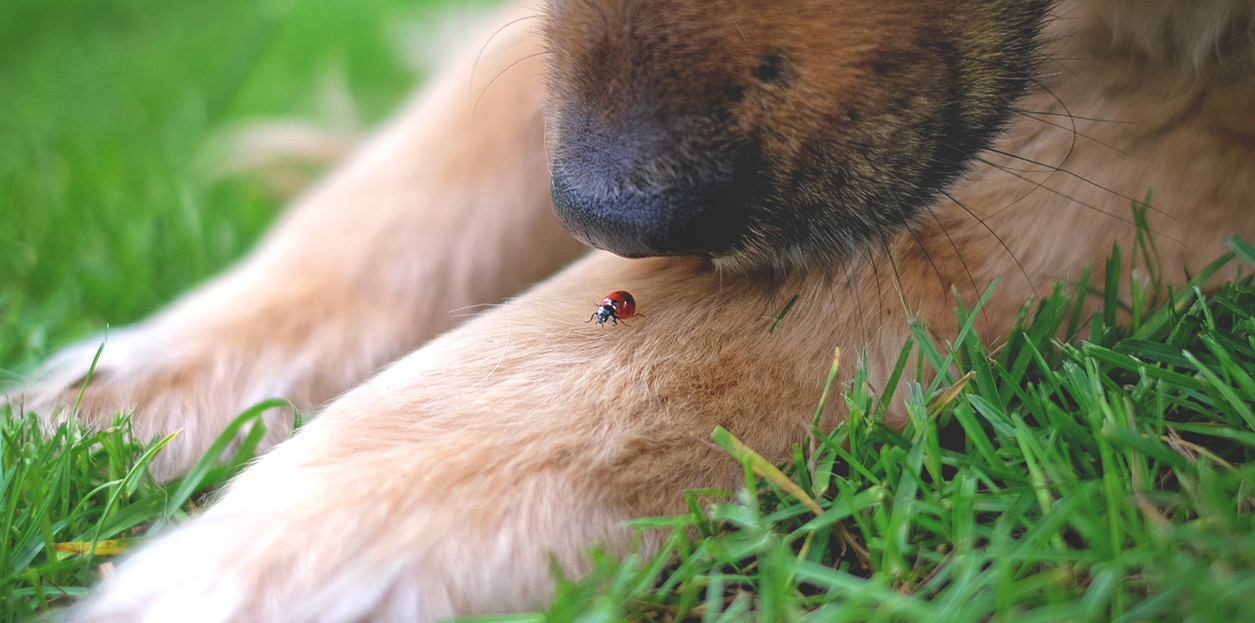Kibbles ’n Bits (of insects)

At least 2 billion people worldwide eat insects regularly as part of their diet. There’s no telling how many cats and dogs do. But one thing is certain: More and more pet owners are feeding their pets insects.
Not free-range insects they’ve caught in the garden or around the house—they’re feeding them insect-based pet foods from commercial pet food manufacturers. In fact, the British Veterinary Association (BVA) heartily recommends that pet owners feed their pets insect-based pet foods.
Simon Doherty, BVMS, president of the BVA, recently told BBC news that “There’s a really exciting future for the use of insect protein for companion animals. It’s a fantastic opportunity—looking at insects to provide alternative sources of some of the nutrient ingredients we use in pet food diets.”
Regarding insect-based pet food in the US, the key word in Doherty’s statement is very much “future.”
Because while insect-based pet food is commercially available and growing in popularity in Great Britain and many European countries, it’s still illegal here.
That’s because the US Food and Drug Administration (FDA) hasn’t sanctioned ingredients sourced from insects as an approved food additive in pet food.
“In general, ingredients used in animal food—including pet food—must be either approved food additives or be generally recognized as safe,” FDA spokesperson Ann Norris told NEWStat.
And dried black soldier fly larvae aside, which has been approved for use in poultry feed and to feed farm-raised salmon, Norris said, “No other insect-based feed ingredient has been reviewed or approved by FDA for use in animal food—including pet food. Other insects or use of insect-based feed in other animal species would require assessment of safety and utility through a regulatory process in order to be legally marketed.”
In other words, pet owners won’t be pouring (or scooping) commercially available insect-based pet food into bowls any time soon.
And that’s too bad, because the manufacture of insect-based pet foods is much easier on the environment, given that conventional factory farming takes a huge toll in terms of energy, water, and land. In addition, there are ethical concerns about the treatment of livestock and pollution—issues that don’t come into play in insect farming (in Europe, insect-based pet food manufacturers source their ingredients from insect farms).
NEWStat reached out to Joe Bartges, DVM, PhD, DACVIM, DACVN, to get a better perspective on the viability of insect-based pet foods. Bartges, a professor of medicine and nutrition at the University of Georgia’s College of Veterinary Medicine and a coauthor of the 2010 AAHA Nutritional Assessment Guidelines for Dogs and Cats, said insect-based pet food “could represent a more sustainable, renewable—and hopefully less expensive—protein source.”
As to how insect-based pet foods would stack up nutritionally against conventional pet foods, Bartges said, “I haven’t seen the nutritional analysis. However, I assume with proper formulation it would be fine in that it would [be] part of the protein package in a diet using complementary proteins and supplemental amino acids.” Bartges points out that’s already being done in the manufacture of conventional pet food; for example, he says, “lysine and methionine are often added to conventional pet foods.”
And while some pet owners might feel a little squeamish about feeding their pets food made with insects, insect-based foods are already available in the human-food market.
Bartges knows about that firsthand—he says he once had cookies made with insect flour.
So how did they taste?
“You couldn’t tell the difference,” Bartges said. Although he did add, “You just had to not think about it.”
Photo credit: © iStock/taniche



